Holly Thompson's Blog, page 16
March 21, 2016
World Poetry Day!
It's #WorldPoetryDay and here it is, the #tweetku I shared on Twitter:
littering the beach
petals and flower heads washed
from full hillside streams

littering the beach
petals and flower heads washed
from full hillside streams

Published on March 21, 2016 07:52
March 10, 2016
For 3/11, Buddhist Lantern Ceremony
On this eve of the fifth anniversary of the March 11, 2011 Great East Japan Earthquake and Tsunami, one of our local temples here in Kamakura held a Buddhist Lantern Festival/Ceremony (万灯会) at dusk. People from the surrounding neighborhoods arrived as darkness settled, wrote messages of hope on the cups holding the candles, then gathered inside the temple's main hall for a Buddhist ceremony, prayers and incense lighting in memory of those lost and in hopes for recovery, good fortune, and revival in the areas of Tohoku affected.
The temple, Kōmyōji (光明寺) is always a peaceful haven. What a beautiful way to gather community to mark this anniversary.



 From Kamakura, sending peace and love to all those affected by the disasters of 3/11.
From Kamakura, sending peace and love to all those affected by the disasters of 3/11.
The temple, Kōmyōji (光明寺) is always a peaceful haven. What a beautiful way to gather community to mark this anniversary.



 From Kamakura, sending peace and love to all those affected by the disasters of 3/11.
From Kamakura, sending peace and love to all those affected by the disasters of 3/11.
Published on March 10, 2016 05:00
February 17, 2016
International Book Giving Day
February 14 was International Book Giving Day--did you know?
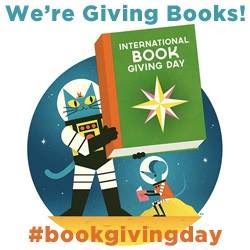
And even though the day has passed, there is still time to enter this Book Giving Day Giveaway the for a signed hardcover copy of my verse novel The Language Inside, about displacement, biculturalism, loss and language, set in Massachusetts and Japan with a current of Cambodia woven through.
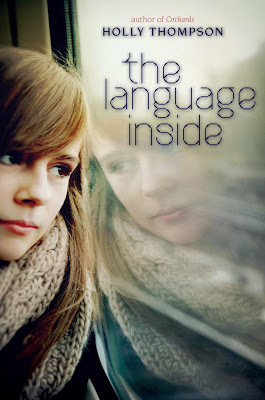
There are other books as well! Enter by February 21, 2016! Good luck! To enter, follow the instructions on the Book Giving Day Giveaway page.

And even though the day has passed, there is still time to enter this Book Giving Day Giveaway the for a signed hardcover copy of my verse novel The Language Inside, about displacement, biculturalism, loss and language, set in Massachusetts and Japan with a current of Cambodia woven through.

There are other books as well! Enter by February 21, 2016! Good luck! To enter, follow the instructions on the Book Giving Day Giveaway page.
Published on February 17, 2016 20:41
February 13, 2016
Mikan Love
What I love.
 A month ago, a day before it snowed, we revisited the village in Izu where I worked for a couple years on a mikan farm doing research for my novel
Orchards
. The farmer I'd worked with had had an abundant mikan harvest. There were still so many aoshima mikan left on the trees in mid-January--simply too many to harvest.
A month ago, a day before it snowed, we revisited the village in Izu where I worked for a couple years on a mikan farm doing research for my novel
Orchards
. The farmer I'd worked with had had an abundant mikan harvest. There were still so many aoshima mikan left on the trees in mid-January--simply too many to harvest.
 So our little group popped into his truck and rode up the steep slopes to one of his orchards and picked baskets full of mikan.
So our little group popped into his truck and rode up the steep slopes to one of his orchards and picked baskets full of mikan.
 "Careful--don't take more than you need," the farmer warned me. "They'll rot before you can eat them all."
"Careful--don't take more than you need," the farmer warned me. "They'll rot before you can eat them all."
I promised him, we would eat them all.
 We peeked into one of the sōko storehouses at wooden crates holding jutarō mikan, floor to ceiling. Jutarō are the late variety of mikan developed in that northern farming district of Izu. Jutarō mikan sweeten after picking if stored in the cool hillside sōko and are shipped to markets in February.
We peeked into one of the sōko storehouses at wooden crates holding jutarō mikan, floor to ceiling. Jutarō are the late variety of mikan developed in that northern farming district of Izu. Jutarō mikan sweeten after picking if stored in the cool hillside sōko and are shipped to markets in February.
 In our tiny home I stuffed our refrigerator with bags of the aoshima mikan. I filled our cool entryway with boxes of mikan.
In our tiny home I stuffed our refrigerator with bags of the aoshima mikan. I filled our cool entryway with boxes of mikan.
 It has now been a month. We still have plenty of mikan left. I eat 3-5 mikan each day. I'm in mikan heaven, just like when I lived in the villages amid the orchards. There, even though I'd worked in the orchards and storage huts all day, people would sometimes stop by with gifts of . . . more mikan.
It has now been a month. We still have plenty of mikan left. I eat 3-5 mikan each day. I'm in mikan heaven, just like when I lived in the villages amid the orchards. There, even though I'd worked in the orchards and storage huts all day, people would sometimes stop by with gifts of . . . more mikan.
So on Valentine's Day, there will be definitely be mikan to go with chocolates for my love.

 A month ago, a day before it snowed, we revisited the village in Izu where I worked for a couple years on a mikan farm doing research for my novel
Orchards
. The farmer I'd worked with had had an abundant mikan harvest. There were still so many aoshima mikan left on the trees in mid-January--simply too many to harvest.
A month ago, a day before it snowed, we revisited the village in Izu where I worked for a couple years on a mikan farm doing research for my novel
Orchards
. The farmer I'd worked with had had an abundant mikan harvest. There were still so many aoshima mikan left on the trees in mid-January--simply too many to harvest. So our little group popped into his truck and rode up the steep slopes to one of his orchards and picked baskets full of mikan.
So our little group popped into his truck and rode up the steep slopes to one of his orchards and picked baskets full of mikan. "Careful--don't take more than you need," the farmer warned me. "They'll rot before you can eat them all."
"Careful--don't take more than you need," the farmer warned me. "They'll rot before you can eat them all."I promised him, we would eat them all.
 We peeked into one of the sōko storehouses at wooden crates holding jutarō mikan, floor to ceiling. Jutarō are the late variety of mikan developed in that northern farming district of Izu. Jutarō mikan sweeten after picking if stored in the cool hillside sōko and are shipped to markets in February.
We peeked into one of the sōko storehouses at wooden crates holding jutarō mikan, floor to ceiling. Jutarō are the late variety of mikan developed in that northern farming district of Izu. Jutarō mikan sweeten after picking if stored in the cool hillside sōko and are shipped to markets in February.  In our tiny home I stuffed our refrigerator with bags of the aoshima mikan. I filled our cool entryway with boxes of mikan.
In our tiny home I stuffed our refrigerator with bags of the aoshima mikan. I filled our cool entryway with boxes of mikan. It has now been a month. We still have plenty of mikan left. I eat 3-5 mikan each day. I'm in mikan heaven, just like when I lived in the villages amid the orchards. There, even though I'd worked in the orchards and storage huts all day, people would sometimes stop by with gifts of . . . more mikan.
It has now been a month. We still have plenty of mikan left. I eat 3-5 mikan each day. I'm in mikan heaven, just like when I lived in the villages amid the orchards. There, even though I'd worked in the orchards and storage huts all day, people would sometimes stop by with gifts of . . . more mikan.So on Valentine's Day, there will be definitely be mikan to go with chocolates for my love.

Published on February 13, 2016 06:42
December 30, 2015
Year-End Haiku
An early, not quite Friday, poetry post.
Here in Kamakura, I am surrounded by Buddhist temples. Most of them date back centuries, since Kamakura was the capital of Japan during the Kamakura Period (1192-1333). Some of these temples are vast with imposing gates, spacious meditation halls, tea houses, gardens, and extensive grounds. Some are hidden deep in finger valleys. Many nestle up against steep cliffs riddled with caves. Others are tiny and unassuming, tucked between ordinary houses.
On my morning running routes, I pass multiple temples, one of which, Jissoji (実相寺), displays seasonal haiku on a copper-roofed signboard by the entrance gate. The haiku are changed regularly, and the poems meander through my mind as I run my back-lane route to the sea.
Today is New Year's Eve day--or in Japanese ōmisoka (大晦日). By now most folks here have completed their top-to-bottom house and garden cleaning--discarding unneeded items and tidying every corner. They have shopped for and displayed their New Year's decorations. They have purchased New Year's feast foods. They are ready to ring in the new year--literally, by lining up at temples for a turn to ring the huge bronze bells after midnight.
Here is the haiku on the temple signboard at Jissoji this week.

捨ててこそ
得るものもあり
年の暮れ
sutete koso
urumono mo ari
toshi no kure
And here is my rough translation:
discarding
as well as acquiring
year's end

Here is the unassuming temple itself.

And here are a few of my own haiku at this 2015 year's end:
.....
temple signboard
reading while running
haiku stumble
.....
evening chimes
dark and quiet settle in
but not neighbor dog
.....
words cast off
others nailed in place
the writer's clock
.....
Do you have some year-end haiku to share?
Here in Kamakura, I am surrounded by Buddhist temples. Most of them date back centuries, since Kamakura was the capital of Japan during the Kamakura Period (1192-1333). Some of these temples are vast with imposing gates, spacious meditation halls, tea houses, gardens, and extensive grounds. Some are hidden deep in finger valleys. Many nestle up against steep cliffs riddled with caves. Others are tiny and unassuming, tucked between ordinary houses.
On my morning running routes, I pass multiple temples, one of which, Jissoji (実相寺), displays seasonal haiku on a copper-roofed signboard by the entrance gate. The haiku are changed regularly, and the poems meander through my mind as I run my back-lane route to the sea.
Today is New Year's Eve day--or in Japanese ōmisoka (大晦日). By now most folks here have completed their top-to-bottom house and garden cleaning--discarding unneeded items and tidying every corner. They have shopped for and displayed their New Year's decorations. They have purchased New Year's feast foods. They are ready to ring in the new year--literally, by lining up at temples for a turn to ring the huge bronze bells after midnight.
Here is the haiku on the temple signboard at Jissoji this week.

捨ててこそ
得るものもあり
年の暮れ
sutete koso
urumono mo ari
toshi no kure
And here is my rough translation:
discarding
as well as acquiring
year's end

Here is the unassuming temple itself.

And here are a few of my own haiku at this 2015 year's end:
.....
temple signboard
reading while running
haiku stumble
.....
evening chimes
dark and quiet settle in
but not neighbor dog
.....
words cast off
others nailed in place
the writer's clock
.....
Do you have some year-end haiku to share?
Published on December 30, 2015 19:36
December 15, 2015
Story in Kyoto Journal
How lovely to see my bicultural story "How to Build a House," with illustrations by Yasmin Flett, in Kyoto Journal! Check out Kyoto Journal 84.

This story delves into bicultural friction using both prose and poetry and even a couple bilingual jokes.
Thank you, Kyoto Journal, for your always striking design combined with voices from Kyoto, Japan and Asia.


This story delves into bicultural friction using both prose and poetry and even a couple bilingual jokes.
Thank you, Kyoto Journal, for your always striking design combined with voices from Kyoto, Japan and Asia.

Published on December 15, 2015 09:52
December 10, 2015
Reading the Pacific War in 5 Formats
Reading the Pacific War--In Five Formats
A combo #Japan and #PoetryFriday and #VerseNovels #CrossingBorders Post
Manga
On November 30, 2015, the world lost one of the most beloved and talented manga artists and one of the most valued chroniclers of the Pacific War--Japanese manga-ka Shigeru Mizuki died at the age of 93. Here is one obituary by Matt Alt in The New Yorker, and here is a poignant tribute, Otsukare, Sensei, by Shigeru Mizuki's English-language translator Zack Davisson.
I have recently been completely immersed in Shigeru Mizuki's translated manga works: Onward Towards our Noble Deaths; the multi-tomed series Showa: A History of Japan including Showa 1926-1939, Showa 1939-1944, Showa 1944-1953, and Showa 1953-1989; the supernatural yokai stories of Kitaro; and NonNonBa. His works are gradually becoming available in English translation, thanks to publisher Drawn & Quarterly.


I know I will be reading Mizuki's Showa series again and again, for their artistry, for their brilliance, and for their powerful anti-war stance.
YA Fiction
December 7 marked the anniversary of the 1941 bombing of Pearl Harbor by the Imperial Japanese Navy, which led to the entrance of the U.S. into WWII. In addition to Mizuki's tomes, I have also been reading Graham Salisbury. I just finished Hunt for the Bamboo Rat, based on a true story of a Japanese-American sent to the Philippines to work as a translator and spy for the U.S. Army. Hunt for the Bamboo Rat is the fourth book in Salisbury's Prisoners of the Empire series.
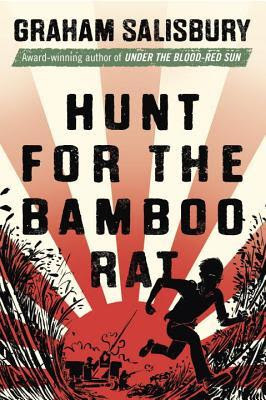
Photography
Pearl Harbor was followed by the relocation and imprisonment of some 120,000 Japanese-Americans from the West Coast. Visit this gallery in the International New York Times of photos in the traveling exhibit of the project Gambatte! Legacy of an Enduring Spirit by photojournalist Paul Kitagaki, Jr., whose parents were interned.
 via International New York Times LensMG/YA Verse Novel
via International New York Times LensMG/YA Verse Novel
Mariko Nagai's verse novel Dust of Eden beautifully captures the pain, loss and sense of betrayal of a young Japanese-American girl sent with her family from California to the Minidoka Relocation Camp in Idaho.
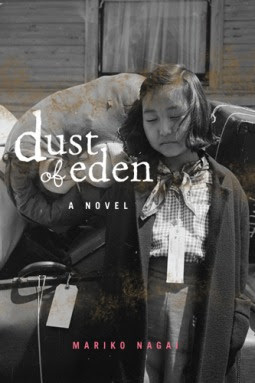
Poetry
For poems by poets from various sides and vantage points of the wars of WW2, see The Poets of WWII, on the Compassion Education site. I'll end this post with works by two Japanese poets.
First I send you to a poem by Rin Ishigaki, "In the Stomachs of One Hundred People"--a poem for readers to ponder.

All of these writers and artists remind us that we must not forget. Manga, fiction, photography, verse novels and poetry can disturb our universe and act as a reminder for us all to strive for peace--here, on this fragile earth.
A combo #Japan and #PoetryFriday and #VerseNovels #CrossingBorders Post
Manga
On November 30, 2015, the world lost one of the most beloved and talented manga artists and one of the most valued chroniclers of the Pacific War--Japanese manga-ka Shigeru Mizuki died at the age of 93. Here is one obituary by Matt Alt in The New Yorker, and here is a poignant tribute, Otsukare, Sensei, by Shigeru Mizuki's English-language translator Zack Davisson.
I have recently been completely immersed in Shigeru Mizuki's translated manga works: Onward Towards our Noble Deaths; the multi-tomed series Showa: A History of Japan including Showa 1926-1939, Showa 1939-1944, Showa 1944-1953, and Showa 1953-1989; the supernatural yokai stories of Kitaro; and NonNonBa. His works are gradually becoming available in English translation, thanks to publisher Drawn & Quarterly.


I know I will be reading Mizuki's Showa series again and again, for their artistry, for their brilliance, and for their powerful anti-war stance.
YA Fiction
December 7 marked the anniversary of the 1941 bombing of Pearl Harbor by the Imperial Japanese Navy, which led to the entrance of the U.S. into WWII. In addition to Mizuki's tomes, I have also been reading Graham Salisbury. I just finished Hunt for the Bamboo Rat, based on a true story of a Japanese-American sent to the Philippines to work as a translator and spy for the U.S. Army. Hunt for the Bamboo Rat is the fourth book in Salisbury's Prisoners of the Empire series.

Photography
Pearl Harbor was followed by the relocation and imprisonment of some 120,000 Japanese-Americans from the West Coast. Visit this gallery in the International New York Times of photos in the traveling exhibit of the project Gambatte! Legacy of an Enduring Spirit by photojournalist Paul Kitagaki, Jr., whose parents were interned.
 via International New York Times LensMG/YA Verse Novel
via International New York Times LensMG/YA Verse NovelMariko Nagai's verse novel Dust of Eden beautifully captures the pain, loss and sense of betrayal of a young Japanese-American girl sent with her family from California to the Minidoka Relocation Camp in Idaho.

Poetry
For poems by poets from various sides and vantage points of the wars of WW2, see The Poets of WWII, on the Compassion Education site. I'll end this post with works by two Japanese poets.
First I send you to a poem by Rin Ishigaki, "In the Stomachs of One Hundred People"--a poem for readers to ponder.
In the Stomachs of One Hundred PeopleAnd last, I send you to the profoundly moving and disturbing poems of atomic bomb survivor and anti-nuclear weapons activist Sadako Kurihara--here are five poems: "We Shall Bring Forth New Life," "The Day of the Atom Bomb," "When We Say, 'Hiroshima,'" "Hiroshima, Auschwitz: We Must Not Forget," and "City Ravaged by Flames."
On the tables, one hundred plates,before them, one hundred people,on the plates, one hundred flounders; (read the full poem here)

All of these writers and artists remind us that we must not forget. Manga, fiction, photography, verse novels and poetry can disturb our universe and act as a reminder for us all to strive for peace--here, on this fragile earth.
Published on December 10, 2015 21:07
December 3, 2015
Sudanese Refugees--Verse Novels Crossing Borders
A #VerseNovels #CrossingBorders #PoetryFriday post.
Writing in verse can serve as a sort of interiority enhancer in a novel, bringing readers even closer to the emotional state of a main character. But scenes written in verse, by nature of the spare language and pared down narrative, build intensity not only via the selected words on the page, but also via inferred action that happens in the white space around the words and off the page.
Flexible in page format and malleable in structure, novels in verse, seem to be well suited to narratives that cross cultures and languages. Verse narratives, with their controlled pacing, can also allow writers to tackle tough topics, such as displacement and trauma, without overwhelming the reader.
Here are three border-crossing verse novels for young people. The refugee characters in all three novels are Sudanese.
In The Good Braider, by Terry Farish, Viola flees Sudan, takes refuge in Cairo, and ultimately resettles in Portland, Maine.
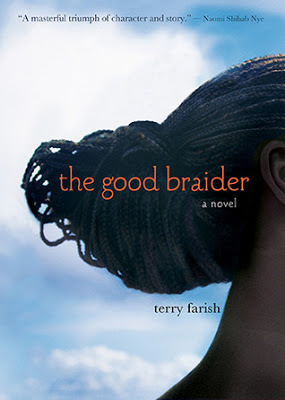
In The Red Pencil, by Andrea Davis-Pinkney, Amira flees to a refugee camp after her village is viciously attacked by the Janjaweed.

In Home of the Brave, by Katherine Applegate, Kek has left Sudan and resettled in Minnesota.

Verse is a medium through which writers can delve into complex tales, and readers can navigate and ponder all that is on the page and as well as all that is not.
Writing in verse can serve as a sort of interiority enhancer in a novel, bringing readers even closer to the emotional state of a main character. But scenes written in verse, by nature of the spare language and pared down narrative, build intensity not only via the selected words on the page, but also via inferred action that happens in the white space around the words and off the page.
Flexible in page format and malleable in structure, novels in verse, seem to be well suited to narratives that cross cultures and languages. Verse narratives, with their controlled pacing, can also allow writers to tackle tough topics, such as displacement and trauma, without overwhelming the reader.
Here are three border-crossing verse novels for young people. The refugee characters in all three novels are Sudanese.
In The Good Braider, by Terry Farish, Viola flees Sudan, takes refuge in Cairo, and ultimately resettles in Portland, Maine.

In The Red Pencil, by Andrea Davis-Pinkney, Amira flees to a refugee camp after her village is viciously attacked by the Janjaweed.

In Home of the Brave, by Katherine Applegate, Kek has left Sudan and resettled in Minnesota.

Verse is a medium through which writers can delve into complex tales, and readers can navigate and ponder all that is on the page and as well as all that is not.
Published on December 03, 2015 21:32
October 21, 2015
IBBY Inspiration!
Last weekend I attended and presented at the 11th IBBY Regional Conference, sponsored by USBBY, in New York City.
Margarita Engle, Padma Venkatraman and I presented a breakout session on Verse Novels Crossing Borders.
 Verse novelists Holly Thompson, Margarita Engle and Padma Venkatraman
Verse novelists Holly Thompson, Margarita Engle and Padma Venkatraman
And there, in the audience, I was delighted to spot poetry advocate, Poetry for Children blogger, and Poetry Friday Anthology editor Sylvia Vardell.
 with Sylvia VardellIt was a whirlwind weekend--besides the conference I also attended the Jane Addams Children's Book Award Ceremony at the Jane Addams Peace Association Headquarters at the U.N. Plaza, where Margarita Engle's verse novel Silver People won an honor.
with Sylvia VardellIt was a whirlwind weekend--besides the conference I also attended the Jane Addams Children's Book Award Ceremony at the Jane Addams Peace Association Headquarters at the U.N. Plaza, where Margarita Engle's verse novel Silver People won an honor.
 Margarita Engle accepting her award
Margarita Engle accepting her award

The IBBY conference schedule was jam-packed with keynotes, panels and breakout sessions. The attendees included so many big names in international children's lit and so many people I'd long hoped to meet. Here are just a few highlight moments from the weekend.
At the end of the panel of illustrators that included Roger Mello, Francois Place, Lisbeth Zwerger and was moderated by Paul O. Zelinsky, Francois Place (illustrator of the book about Hokusai The Old Man Mad About Drawing) did a bit of on-the-spot drawing.

Translation was highlighted by IBBY with a panel presentation of translators including Ajia (Chinese), Laura Watkinson (Dutch) and Mara Lethem (Spanish and Catalan).
 Ajia, Mara Lethem, Laura Watkinson and moderator Claudia BedrickTranslator Laura Watkinson made the point, "Translation is writing. I'm not the author. I didn't come up with the plot or characters, but I am the writer." And Mara Letham aptly said of the scarcity of children's books in translation in the U.S., "It's a cultural impoverishment--we're sitting around gazing at our navels. We're exporting culture, but we're not importing it, and we're culturally impoverished because of this." There was also a translation breakout session, which unfortunately I couldn't attend, and Susan Cooper devoted much of her keynote talk to the importance of translation.
Ajia, Mara Lethem, Laura Watkinson and moderator Claudia BedrickTranslator Laura Watkinson made the point, "Translation is writing. I'm not the author. I didn't come up with the plot or characters, but I am the writer." And Mara Letham aptly said of the scarcity of children's books in translation in the U.S., "It's a cultural impoverishment--we're sitting around gazing at our navels. We're exporting culture, but we're not importing it, and we're culturally impoverished because of this." There was also a translation breakout session, which unfortunately I couldn't attend, and Susan Cooper devoted much of her keynote talk to the importance of translation.
There were so many breakout sessions concurrently scheduled that I wanted to attend, and for one breakout period I frantically attempted to catch a bit of three different sessions--a bit of the session by Words Without Borders; a bit of USBBY 2015 Outstanding International Books, and the tail end of Through the Rabbit Hole of War: Displacement and Courage, with Lyn Miller-Lachman, Nancy Bo Flood, and Terry Farish.
 Authors Nancy Bo Flood, Lyn Miller-Lachman and Terry FarishThe panel on graphic novels was wonderful . . .
Authors Nancy Bo Flood, Lyn Miller-Lachman and Terry FarishThe panel on graphic novels was wonderful . . .
 Francoise Mouly, Liniers, Andres Vera Martinez and Gene Luen Yang(but rather perplexingly the word manga was not mentioned--ahem).
Francoise Mouly, Liniers, Andres Vera Martinez and Gene Luen Yang(but rather perplexingly the word manga was not mentioned--ahem).
At the conference I was able to meet up with scholar, teacher and librarian Junko Yokota, BookDragon's Terry Hong, and English professor Jongsun Wee. Asian kidlit power!
 Jongsun Wee, Terry Hong and Junko YokotaKeynote speakers over the weekend included Kate DiCamillo, Leonard Marcus, Lois Lowry, Susan Cooper and Chris Raschka--who gave a moving tribute to Vera B. Williams, with whom he'd been collaborating right up until her death last week.
Jongsun Wee, Terry Hong and Junko YokotaKeynote speakers over the weekend included Kate DiCamillo, Leonard Marcus, Lois Lowry, Susan Cooper and Chris Raschka--who gave a moving tribute to Vera B. Williams, with whom he'd been collaborating right up until her death last week.
Author David Almond was the final speaker of the IBBY conference.

I was so pleased to have the chance to say hello to David again--he traveled to Japan over ten years ago when I was just starting as SCBWI Japan regional advisor, and his was the first event I planned. His words to me during his visit to SCBWI Japan and Yokohama International School so fueled and moved me that I began dedicating most of my writing time to young adult literature from that point on.
The conference took place in Manhattan's Financial district in a school with phenomenal views.



What an inspiring IBBY weekend in every way! Already I am thinking that I may need to find the means to attend the next IBBY regional conference to be held in Seattle in 2017. Or, ever so enticing, the 2016 IBBY World Congress in Auckland, New Zealand. Thank you, IBBY and USBBY!
Margarita Engle, Padma Venkatraman and I presented a breakout session on Verse Novels Crossing Borders.
 Verse novelists Holly Thompson, Margarita Engle and Padma Venkatraman
Verse novelists Holly Thompson, Margarita Engle and Padma VenkatramanAnd there, in the audience, I was delighted to spot poetry advocate, Poetry for Children blogger, and Poetry Friday Anthology editor Sylvia Vardell.
 with Sylvia VardellIt was a whirlwind weekend--besides the conference I also attended the Jane Addams Children's Book Award Ceremony at the Jane Addams Peace Association Headquarters at the U.N. Plaza, where Margarita Engle's verse novel Silver People won an honor.
with Sylvia VardellIt was a whirlwind weekend--besides the conference I also attended the Jane Addams Children's Book Award Ceremony at the Jane Addams Peace Association Headquarters at the U.N. Plaza, where Margarita Engle's verse novel Silver People won an honor. Margarita Engle accepting her award
Margarita Engle accepting her award

The IBBY conference schedule was jam-packed with keynotes, panels and breakout sessions. The attendees included so many big names in international children's lit and so many people I'd long hoped to meet. Here are just a few highlight moments from the weekend.
At the end of the panel of illustrators that included Roger Mello, Francois Place, Lisbeth Zwerger and was moderated by Paul O. Zelinsky, Francois Place (illustrator of the book about Hokusai The Old Man Mad About Drawing) did a bit of on-the-spot drawing.

Translation was highlighted by IBBY with a panel presentation of translators including Ajia (Chinese), Laura Watkinson (Dutch) and Mara Lethem (Spanish and Catalan).
 Ajia, Mara Lethem, Laura Watkinson and moderator Claudia BedrickTranslator Laura Watkinson made the point, "Translation is writing. I'm not the author. I didn't come up with the plot or characters, but I am the writer." And Mara Letham aptly said of the scarcity of children's books in translation in the U.S., "It's a cultural impoverishment--we're sitting around gazing at our navels. We're exporting culture, but we're not importing it, and we're culturally impoverished because of this." There was also a translation breakout session, which unfortunately I couldn't attend, and Susan Cooper devoted much of her keynote talk to the importance of translation.
Ajia, Mara Lethem, Laura Watkinson and moderator Claudia BedrickTranslator Laura Watkinson made the point, "Translation is writing. I'm not the author. I didn't come up with the plot or characters, but I am the writer." And Mara Letham aptly said of the scarcity of children's books in translation in the U.S., "It's a cultural impoverishment--we're sitting around gazing at our navels. We're exporting culture, but we're not importing it, and we're culturally impoverished because of this." There was also a translation breakout session, which unfortunately I couldn't attend, and Susan Cooper devoted much of her keynote talk to the importance of translation.There were so many breakout sessions concurrently scheduled that I wanted to attend, and for one breakout period I frantically attempted to catch a bit of three different sessions--a bit of the session by Words Without Borders; a bit of USBBY 2015 Outstanding International Books, and the tail end of Through the Rabbit Hole of War: Displacement and Courage, with Lyn Miller-Lachman, Nancy Bo Flood, and Terry Farish.
 Authors Nancy Bo Flood, Lyn Miller-Lachman and Terry FarishThe panel on graphic novels was wonderful . . .
Authors Nancy Bo Flood, Lyn Miller-Lachman and Terry FarishThe panel on graphic novels was wonderful . . . Francoise Mouly, Liniers, Andres Vera Martinez and Gene Luen Yang(but rather perplexingly the word manga was not mentioned--ahem).
Francoise Mouly, Liniers, Andres Vera Martinez and Gene Luen Yang(but rather perplexingly the word manga was not mentioned--ahem).At the conference I was able to meet up with scholar, teacher and librarian Junko Yokota, BookDragon's Terry Hong, and English professor Jongsun Wee. Asian kidlit power!
 Jongsun Wee, Terry Hong and Junko YokotaKeynote speakers over the weekend included Kate DiCamillo, Leonard Marcus, Lois Lowry, Susan Cooper and Chris Raschka--who gave a moving tribute to Vera B. Williams, with whom he'd been collaborating right up until her death last week.
Jongsun Wee, Terry Hong and Junko YokotaKeynote speakers over the weekend included Kate DiCamillo, Leonard Marcus, Lois Lowry, Susan Cooper and Chris Raschka--who gave a moving tribute to Vera B. Williams, with whom he'd been collaborating right up until her death last week.Author David Almond was the final speaker of the IBBY conference.

I was so pleased to have the chance to say hello to David again--he traveled to Japan over ten years ago when I was just starting as SCBWI Japan regional advisor, and his was the first event I planned. His words to me during his visit to SCBWI Japan and Yokohama International School so fueled and moved me that I began dedicating most of my writing time to young adult literature from that point on.

The conference took place in Manhattan's Financial district in a school with phenomenal views.



What an inspiring IBBY weekend in every way! Already I am thinking that I may need to find the means to attend the next IBBY regional conference to be held in Seattle in 2017. Or, ever so enticing, the 2016 IBBY World Congress in Auckland, New Zealand. Thank you, IBBY and USBBY!
Published on October 21, 2015 19:24
October 15, 2015
Japanese Poet Michio Mado
This is a #PoetryFriday post.
It's Poetry Friday, and I am headed to the International Board on Books for Young People (IBBY) conference in New York, so I thought I would share a bit about the Japanese poet Michio Mado, who in 1994 won the Hans Christian Andersen Award for lasting contribution to children's literature, conferred by IBBY.
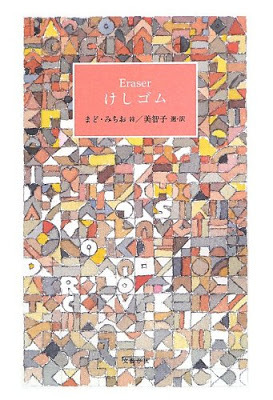
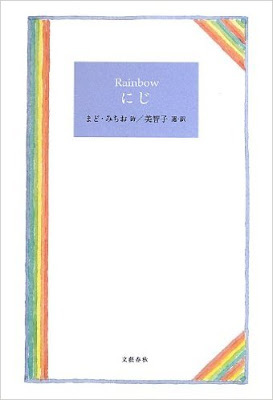
Michio Mado was born in Japan in 1909 and lived to be 104; he died in 2014. He wrote poetry, children's songs, and he was a painter, and he won numerous awards in his lifetime. Many of his poems were translated into English by Japan's Empress Michiko, the most recent volumes in English being Rainbow and Eraser. To learn more, read this post about Michio Mado, including a poem, on Poetry International, and this excellent 2014 post by translator Lynne E. Riggs: The Poetry of Michio Mado on the SCBWI Japan Translation Group blog.
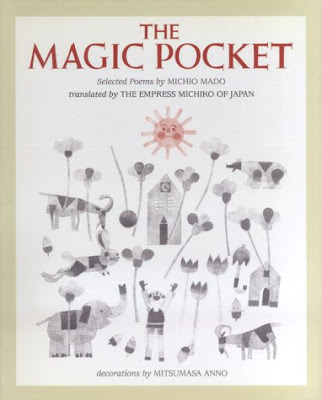
In the books translated by Empress Michiko, the Japanese version of the poem appears alongside the English translation. Sylvia Vardell, in her book Poetry People: A Practical Guide to Children's Poets, suggests using a Japanese speaker and English speaker and experimenting with readings of the poems in two voices. Certainly a fun performance could be created from these volumes of poems!
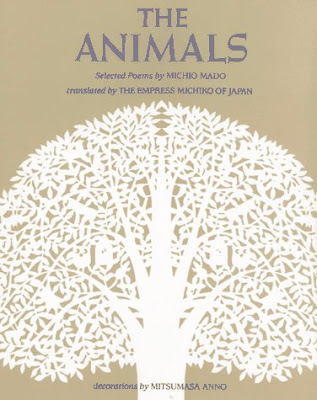
It's Poetry Friday, and I am headed to the International Board on Books for Young People (IBBY) conference in New York, so I thought I would share a bit about the Japanese poet Michio Mado, who in 1994 won the Hans Christian Andersen Award for lasting contribution to children's literature, conferred by IBBY.


Michio Mado was born in Japan in 1909 and lived to be 104; he died in 2014. He wrote poetry, children's songs, and he was a painter, and he won numerous awards in his lifetime. Many of his poems were translated into English by Japan's Empress Michiko, the most recent volumes in English being Rainbow and Eraser. To learn more, read this post about Michio Mado, including a poem, on Poetry International, and this excellent 2014 post by translator Lynne E. Riggs: The Poetry of Michio Mado on the SCBWI Japan Translation Group blog.

In the books translated by Empress Michiko, the Japanese version of the poem appears alongside the English translation. Sylvia Vardell, in her book Poetry People: A Practical Guide to Children's Poets, suggests using a Japanese speaker and English speaker and experimenting with readings of the poems in two voices. Certainly a fun performance could be created from these volumes of poems!

Published on October 15, 2015 21:24



